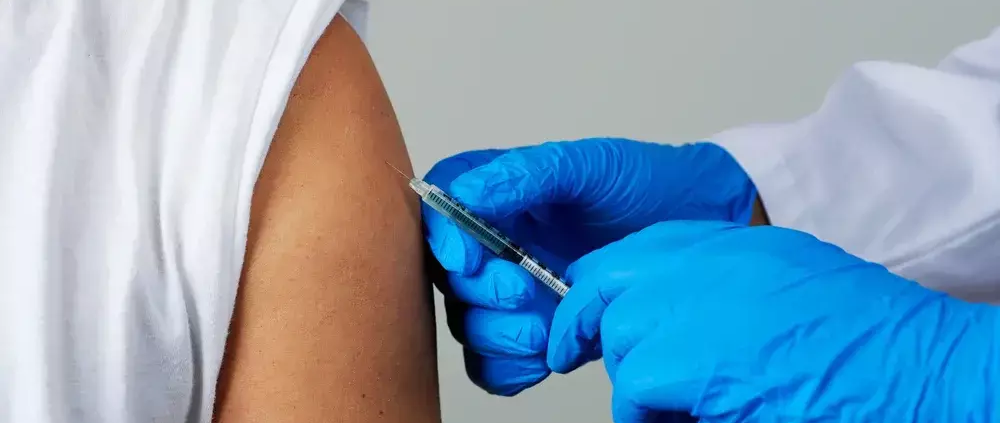Rare case of Bell’s palsy and parsonage-turner syndrome following pneumococcal vaccination: a report

Parsonage-Turner syndrome (PTS), also known as brachial neuritis, is a rare self-limiting, idiopathic condition characterized by sudden onset upper extremity pain with associated weakness and muscle atrophy. There exists a growing association between the development of PTS and infection/vaccinations in recent years.
Bell palsy (BP) is an idiopathic disease process involving acute-onset unilateral acute facial paralysis resulting from edema and inflammation of the seventh cranial nerve. The etiology of BP is also largely unknown, but infectious processes, including viral reactivation and adverse vaccination reactions, have recently been documented. Although both PTS and BP are uncommon on their own, it is extremely rare for the 2 conditions to occur simultaneously.
Devin A. Maez et al presents a unique case of PTS and BP developing following the administration of the pneumococcal 20-valent conjugate vaccine.
A 66-year-old woman with no significant neurologic or musculoskeletal history presented to urgent care with low-grade fevers and diffuse myalgias 4 days after receiving the pneumococcal 20-valent conjugate vaccine from her primary care physician. Preliminary influenza and COVID-19 testing were negative, and she was advised to continue with at-home acetaminophen and nonsteroidal anti-inflammatory agents for symptomatic relief. She presented again to the emergency department 2 days later complaining of acute onset severe left shoulder pain with radiation to the neck and right upper quadrant (RUQ) postprandial pain.
An initial work-up included complete blood count, complete metabolic panel, lipase, and troponin, all of which were unremarkable. RUQ ultrasound was negative for choledocholithiasis or other acute pathology. Chest X-ray was negative for signs of acute infection, and electrocardiogram (ECG) was negative for myocardial infarction or coronary pathology. The patient’s left shoulder, deltoid region was noted to be erythematous with an area of firmness near her original injection site. The patient was administered 15 mg of intramuscular ketorolac with rapid improvement of her symptoms. Thus, her pain was attributed as likely musculoskeletal in nature. She was ultimately discharged without further work-up.
Two weeks later, the patient presented to the emergency department for a third time with acute onset right sided facial droop. After neurologic evaluation, she was diagnosed with BP in the setting of her recent vaccination and given a 7-day course of 1 g oral valacyclovir and 40 mg of oral prednisone. Her facial symptoms resolved with adequate treatment over the next several weeks.
Approximately 2 months later, the patient was evaluated in an outpatient orthopaedic sports medicine clinic for her persistent, severe pain and weakness in the left shoulder and arm, all of which had continued to steadily worsen since her vaccine was administered nearly 3 months prior. Her symptoms were now causing sleep difficulties and were significantly affecting her daily activities. At the time, she was still managing her symptoms with anti inflammatories and a home exercise program without relief.
A focused physical examination of the left upper extremity demonstrated full passive range of motion, with pain on active forward flexion of the shoulder joint and terminal range of motion. Left shoulder examination demonstrated positive Neer and Hawkins tests, indicating some degree of shoulder impingement. She had minimally decreased strength with resisted rotator cuff testing and was further noted to be neurovascularly intact distally. No apparent muscular atrophy was visible on examination.
Preliminary X-ray of the left shoulder was obtained and showed no major degenerative changes aside from mild acromioclavicular joint arthritis (Figs. 1 and 2). No fracture or dislocation was noted. A subsequent magnetic resonance imaging (MRI) of the left shoulder was ordered to evaluate for rotator cuff pathology and etiology of the disabling pain.
The MRI demonstrated moderate to marked edema involving the left infraspinatus and supraspinatus musculature and questionable minimal edema of the teres minor muscle without evidence of rotator cuff or deltoid muscular atrophy. The findings were most consistent with denervation changes. The MRI results were discussed with the patient in detail, which the provider diagnosed as most consistent with PTS in the setting of her recent vaccination and no other etiology. She was referred to formal physical therapy for further management and was advised to continue over-the-counter pain medications as needed. A cortisone injection was also offered, but the patient elected to defer during this visit. Her symptoms gradually improved with this treatment regimen over the next several weeks.
The authors concluded – “Both PTS and BP are acute denervation diseases affecting the brachial plexus and seventh cranial nerves, respectively that are often precipitated by an immune trigger, including vaccinations. PTS has not been reported in the setting of pneumococcal vaccination and is also rarely reported in conjunction with BP. Thus, it is imperative to recognize PTS-like and BP-like symptoms and administer adequate treatment to obtain the best possible patient outcomes. However, it is also imperative to note that vaccinations themselves, including their own distinct components, may not be the sole cause of these disease processes. Further research is needed to determine the sequelae of PTS and BP to provide safe and accurate recommendations for future patient care.”
Further reading:
BELL PALSY AND PARSONAGE-TURNER SYNDROME FOLLOWING PNEUMOCOCCAL VACCINATION: A CASE REPORT
Devin A. Maez et al
JBJS JOPA 2024; 12(1): e23.00024
http://dx.doi.org/10.2106/JBJS.JOPA.23.00024



